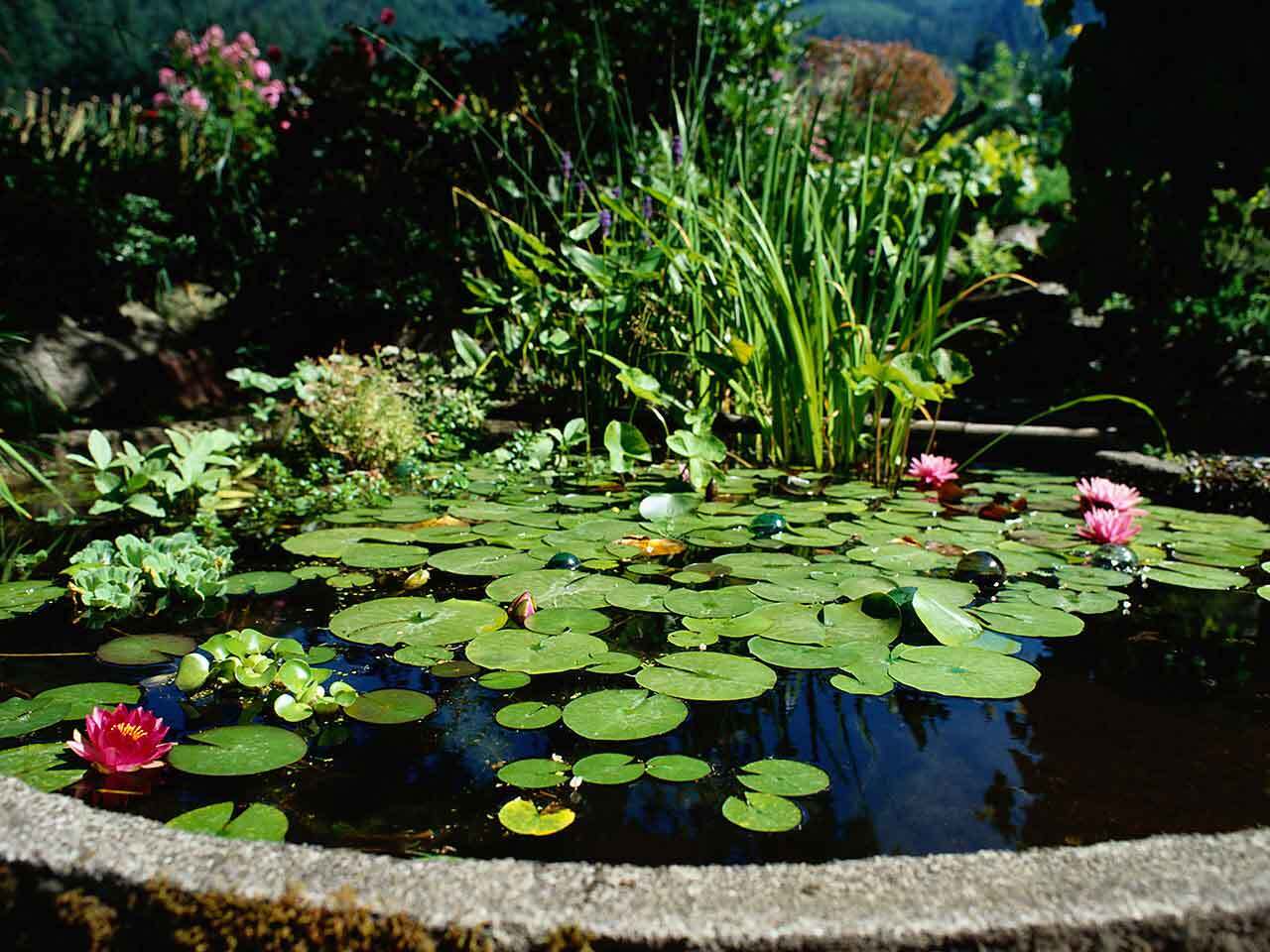Oxygenating Plants
What are oxygenating plants?
Oxygenating plants (also referred to as oxygenators) in ponds and water gardens are best described as underwater plants. They grow with some or all of their foliage (leaves) below the water surface
How do plants make oxygen?
In simple terms –
Plants need carbon dioxide, water and sunlight in order to photosynthesise.
Light
Carbon dioxide + Water PhotosynthesisGlucose + Oxygen
Do I need oxygenating plants for my fish?
Oxygenating plants do provide some oxygen in the daylight when they photosynthesize, but at night this process is reversed and they consume some of the oxygen as they respire.
However the benefit of oxygenating plants in producing oxygen for fish tends to be over exaggerated. The small amount of oxygen that they produce is insignificant compared to that created through the splashing or movement of water.
Oxygenating plants help condition the water, by absorbing nutrients such as ammonia, nitrates and nitrites as well as other minerals and salts. If these are allowed to build up, they would unbalance the pond and become toxic to the fish and other aquatic life.
Their actual benefit lies in the fact that they are often very vigorous growers and should be thought of as nutrient sponges. It is often easier to maintain a pond that contains some of these plants, as they are easier to scoop out of the pond when you have an excess, compared with trying to remove excess algae. They also make a great high nutrient mulch when spread out on the garden.

How many oxygenating plants should I put into my pond?
This is an extremely complex question as it’s like asking for the formula to achieving an ecological balance. Only time and experience with an individual pond can help us come close to a solution. A balance depends upon stocking the pond with the right amount of fish, plants, good quality water, good depth in the pond and enough sunlight for the plants.
Tips
As a guide, you could start with these steps-
1. Calculate the surface area of the pond (m²),
2. Calculate the area of pond surface covered by plants (i.e. covered by waterlily leaves and other emergent plants) (m²)
Then use this formula –
(Pond surface area – Pond surface covered by plants) m² X 3 = Number of oxygenating plants.
Note –
- If you add fish to your pond then you may need to use twice as many oxygenating plants, due to the higher nutrient load caused by the fish.
- To guarantee pristine water clarity you need to incorporate a biological filtration system into your pond design.
- Many experts tend to use much higher levels and some even quote two bunches of oxygenating plants per square foot of pond. This works out to over 20 bunches per square metre. They may be right, but we suspect that they are just trying harder to sell more plants.
- We recommend, start with less. You can always add more.


